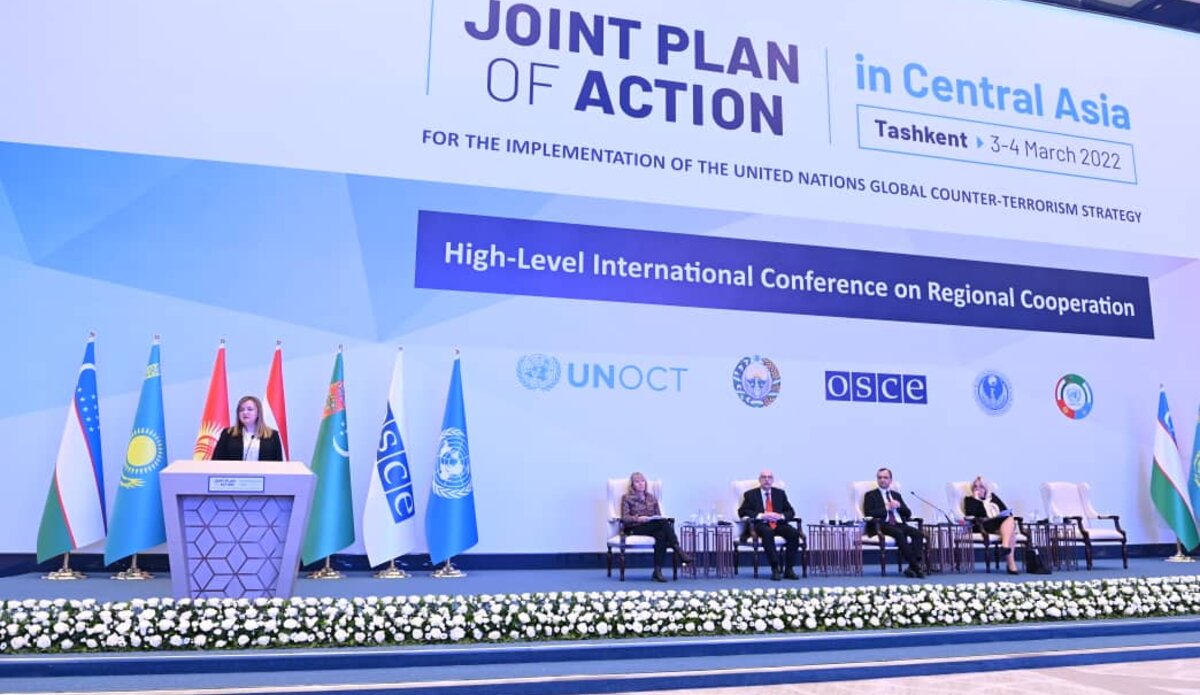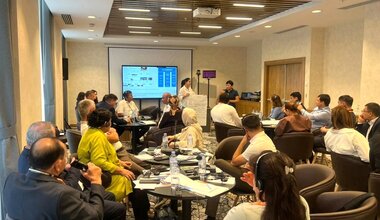UNRCCA CO-ORGANIZES A MINISTERIAL-LEVEL CONFERENCE TO ADOPT A NEW JOINT PLAN OF ACTION FOR THE IMPLEMENTATION OF THE UN GLOBAL COUNTER-TERRORISM STRATEGY IN CENTRAL ASIA
TASHKENT, Uzbekistan
On 3-4 March 2022, UNRCCA and the UN Office of Counter-Terrorism (UNOCT) in partnership with the Ministry of Foreign Affairs of the Republic of Uzbekistan, the Institute for Strategic and Regional Studies under the President of the Republic of Uzbekistan and the Organization for Security and Cooperation in Europe (OSCE) organized the international high-level conference “Regional cooperation among Central Asian countries within the framework of the Joint Plan of Action (JPoA) for the Implementation of the United Nations Global Counter-Terrorism Strategy”.
On the occasion of the 10th anniversary of the JPoA, the conference was aimed at the adoption of a new updated Plan, considering existing and emerging challenges in the region such as ones related to cybersecurity, combating the financing of terrorism, border security, return of foreign terrorist fighters and developments in Afghanistan.
In addition to the Joint Plan of Action, the Foreign Ministers of the Central Asian states adopted the Tashkent Declaration, committing to strengthen regional efforts against terrorism.
H.E. Shavkat Mirziyoyev, President of Uzbekistan and António Guterres, UN Secretary-General, welcomed participants via video messages. The high-officials emphasized successful regional interaction in the field of counter-terrorism in Central Asia.
In her statement, SRSG Natalia Gherman mentioned that the close regional cooperation allowed to adopt such unique document as the Joint Plan of Action. She expressed hope that the new Joint Plan will continue to serve as a solid basis for coordinated activities to prevent violent extremism and to counter terrorism in the region.
The conference was organized in a hybrid format with more than 150 participants being present in-person. High-level officials from all five Central Asian states, regional organizations, donor community, civil society groups, think-tanks and academia took active part in exchanging views and ideas.
 UN
UN





